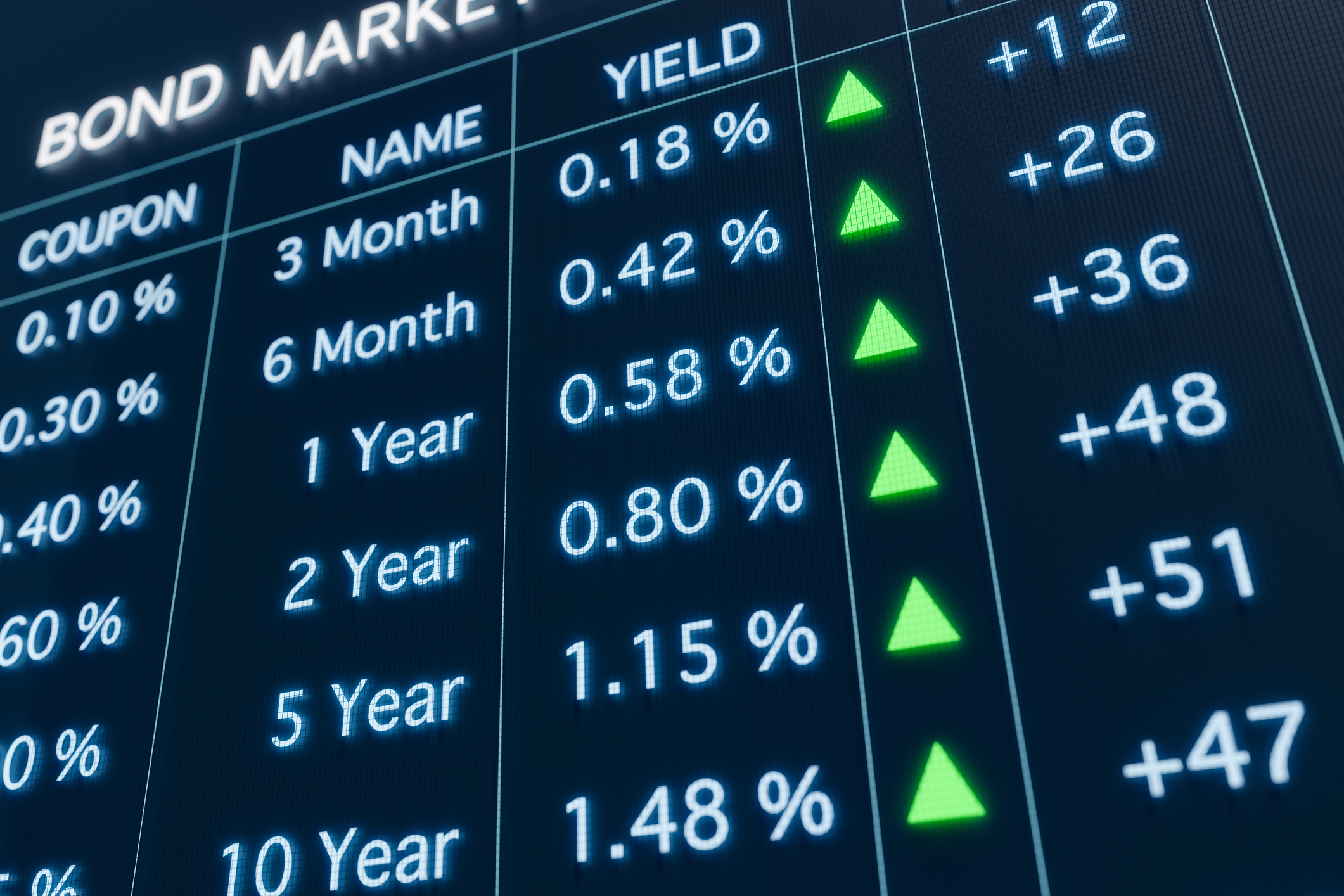What is a bond?
Investing in bonds is a tried and tested cornerstone of portfolio strategy, but few investors are fully aware of what bonds are and how they work


Investing in bonds is a means of diversifying a portfolio away from just stocks.
A well-balanced portfolio will likely include a mix of asset classes – some stocks and investment funds, some commodities such as gold or silver, perhaps some real estate, and of course, some bonds.
“Bonds are a cornerstone of the financial markets, offering investors a reliable way to earn income and diversify their portfolios,” Laith Khalaf, head of investment analysis at AJ Bell, tells MoneyWeek. “While they may lack the excitement of equities, bonds are useful tools for anyone seeking diversification or a predictable income stream.”
MoneyWeek
Subscribe to MoneyWeek today and get your first six magazine issues absolutely FREE

Sign up to Money Morning
Don't miss the latest investment and personal finances news, market analysis, plus money-saving tips with our free twice-daily newsletter
Don't miss the latest investment and personal finances news, market analysis, plus money-saving tips with our free twice-daily newsletter
However, many invest in bonds without fully understanding what a bond is, or how bonds work.
Effectively, a bond is an IOU. When governments or large companies want to borrow money, they often do so by issuing bonds, which are bought by investors.
For example, let’s say the UK government needs to borrow a certain sum of money over a period of ten years. The government would issue a ten-year government bond. In the case of the UK government, this is known as a ‘gilt’. If it was the US government, it would be a ‘Treasury’.
How do bonds work?
The bond has a ‘face value’ or ‘par value’. In our example above, that’s the amount of money the UK government will pay the holder of the bond when the bond matures in ten years’ time.
The bond also has a ‘coupon’. That’s the annual amount of interest the government or bond provider will pay the bondholder. This coupon payment is usually fixed, which is why the bond market is also known as the fixed-income market.
Bondholders get annual interest, plus their money back at the end of the loan period.
Bonds can also be traded: they are IOUs, but they can be bought and sold, meaning their price can go up and down, even though their face value stays the same.
How does that work? Let’s take an easy example. Say we have a UK government bond that was issued a while ago. When it originally came out, it paid a £10 coupon every year, on a face value of £100. The thing is, 10% is an attractive interest rate these days. Today, an investor would be willing to pay significantly more than £100 for an investment that paid out £10 a year for taking almost no risk. So the market price for this bond might be a lot higher than £100. In turn, the interest rate – or ‘yield’ – on the bond would be lower than 10%.
A highly trusted nation such as the US or a highly rated company such as Apple (NASDAQ:AAPL) will be able to offer a low coupon because it has a high credit rating. Less reliable nations or small, riskier firms will pay more.
Interest rates also play a significant role in bond pricing. “When rates rise, the prices of existing bonds typically fall because newer bonds offer higher yields,” says Khalaf.
What are the different types of bonds?
“There are many types of bonds available for investors,” says Khalaf. “Government bonds, such as US Treasury securities or UK gilts, are issued by national governments and are considered among the safest investments due to their low credit risk."
Government bonds – also known as sovereign bonds – like these are “the bedrock of the financial system,” Vikram Aggarwal, sovereign debt investment manager at Jupiter Asset Management, tells MoneyWeek. They are one of the largest asset classes in the world according to total market value, as well as being the largest type of bond available.
“It’s probably the most liquid asset class out there,” adds Aggarwal. “The value proposition for sovereign bonds right now is quite attractive… There’s potential for yield, and potential for capital appreciation.”
Corporations also issue bonds in order to borrow money. These can range from investment-grade bonds – which, like government bonds, are very low-risk – to high-yield bonds that also carry higher default risk. At the extreme, these are called “junk” bonds.
So on the one hand, it is important to consider who is issuing a bond before buying it. Larger, more established companies or nations are generally viewed as a less risky investment than smaller, less established alternatives.
However, the duration of the bond – the time over which it “matures” – is also an important consideration. Every bond has a maturity date; this is the point at which the bond issuer pays the face value of the bond to the bondholder, and stops paying annual interest on the bond.
“Maturity periods further differentiate bonds with short-term, medium-term and long-term bonds available to investors,” says Khalaf. He adds that “longer-term bonds are more sensitive to changes in interest rates”.
Why invest in bonds?
Historically, a simple rule of thumb for investors to follow was to divide a portfolio between stocks and bonds in order to offer it balance and diversification. Two common forms of this approach are the 60/40 portfolio – one where 60% is allocated to stocks, and the remainder to bonds – and the 50/50 portfolio, which is split evenly between the two.
The theory underlying these approaches is that stocks (or equities, as they are often referred to in this context) will perform well during market upturns, but that bonds will provide defence during times of market downturns.
However, in the current era, it is debatable whether or not bonds provide this diversification. Johanna Kyrklund, group chief investment officer at Schroders, told a 2025 crystal ball webinar in November that bonds have offered relatively little diversification to equities in recent years.
She does, however, still recommend investing in bonds, but for income, rather than diversification.
How to invest in bonds
“Investing in bonds has become increasingly accessible to everyday investors,” says Khalaf.
Investors can buy many types of bonds directly through an investment platform or investing app.
“Or, a more popular choice is to buy bonds through a fund or ETF which offers a professionally managed, diversified portfolio,” says Khalaf.
As with equities, bond ETFs are increasingly available as actively-managed products. On 19 February 2025, Jupiter Asset Management launched its first ETF, the Jupiter Global Government Bond Active UCITS ETF (LON:GOVE) – an actively-managed fund that invests in sovereign bonds, both in developed and emerging markets, that are mispriced, based on Jupiter’s perception of the economic climate.
“We use a mixture of qualitative and quantitative inputs into our decision-making process... Essentially, we’re looking for value in the market – as with any asset class,” says Aggarwal, the fund’s manager. Value can take various forms here: it could be to do with the yield curve, or the expected outlook for a particular country.
“We think of individual countries almost in the same way that an equity investor will think of individual companies,” says Aggarwal.
Get the latest financial news, insights and expert analysis from our award-winning MoneyWeek team, to help you understand what really matters when it comes to your finances.

Dan is a financial journalist who, prior to joining MoneyWeek, spent five years writing for OPTO, an investment magazine focused on growth and technology stocks, ETFs and thematic investing.
Before becoming a writer, Dan spent six years working in talent acquisition in the tech sector, including for credit scoring start-up ClearScore where he first developed an interest in personal finance.
Dan studied Social Anthropology and Management at Sidney Sussex College and the Judge Business School, Cambridge University. Outside finance, he also enjoys travel writing, and has edited two published travel books.
-
 ‘Why I have ditched my Help to Buy ISA for cash savings and the stock market’
‘Why I have ditched my Help to Buy ISA for cash savings and the stock market’Without the 25% bonus, my Help to Buy ISA is effectively redundant, says MoneyWeek writer Sam Walker.
-
 Is your inheritance tax allowance cut if you sell to downsize or sell your home to pay for care?
Is your inheritance tax allowance cut if you sell to downsize or sell your home to pay for care?Downsizing relief is a little-known benefit that could save your loved ones tens of thousands of pounds in inheritance tax after you’ve died.